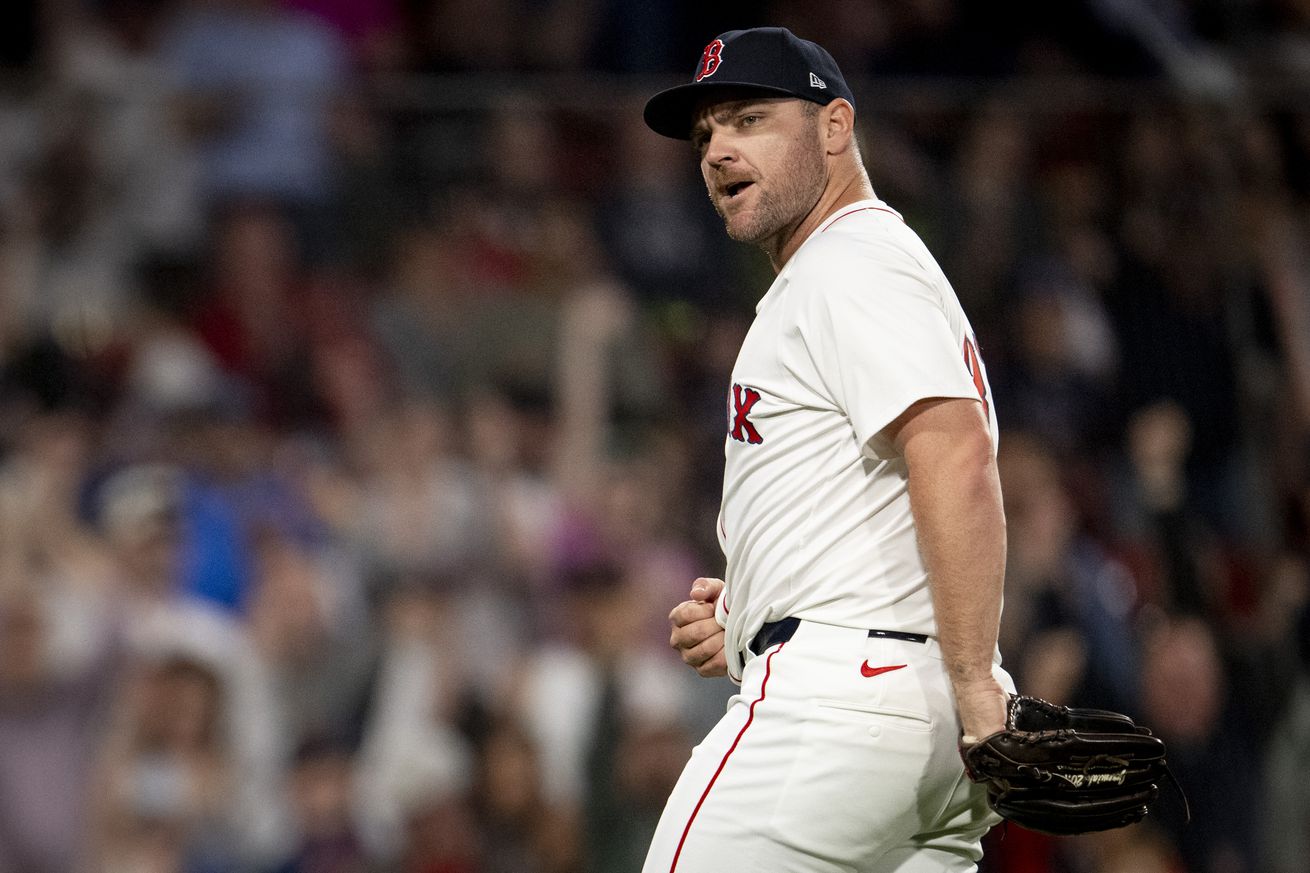
Aside from the home run allowed in his debut outing, Hendriks has been solid.
The Red Sox bullpen needs help. Despite a revolving door of starting pitchers, the rotation has given the team plenty of opportunities to win games over the last week or so. On multiple occasions, the back end of the bullpen has given the lead back, resulting in multiple losses.
Alex Cora’s usage of the bullpen has some loosely defined roles. Aroldis Chapman is the closer. Garrett Whitlock and Justin Slaten enter the game with a late lead. Greg Weissert is the next high-leverage guy, typically when Whitlock or Slaten aren’t available. Justin Wilson is the first-choice lefty with Brennan Bernardino as the alternate. Sean Newcomb is the long reliever, whose job is a necessary evil. That just leaves us with Liam Hendriks.
Hendriks has made six appearances since being activated from the injured list. Three of those outings were with the Red Sox trailing; the other three came with the Red Sox holding large leads. Right now, it seems as if Alex Cora isn’t ready to trust Hendriks in a high-leverage spot. But should he?
Hendriks’ Red Sox debut didn’t inspire confidence. He couldn’t control his fastball, allowed a few base runners, and surrendered a home run. I’m willing to chalk the lack of command up to the adrenaline of your first appearance in two years, though, and he hasn’t allowed a run since. At the same time, I wouldn’t say Hendriks is back to his best self just yet.
Hendriks’ arsenal is largely unchanged from when he was at his best. He uses a fastball, slider, and curveball, with the fastball accounting for about half of his pitches. So far this season, the slider has been his best pitch. It’s slower than it once was, but it still gives hitters a very difficult time. Hendriks throws it to the glove side, rarely ever in the zone, and it produces some incredibly ugly swings. It’s very reminiscent of the old Hendriks. Hitters are so geared up for the fastball that when he breaks off a slider, they can’t hold up and swing like David Spade in The Benchwarmers.
While his slider has returned to pre-injury levels, his fastball isn’t quite there yet. In my mind, it comes down to one factor: velocity. He’s simply not throwing as hard. Hendriks is 36 years old and seeing game action for the first time in multiple years due to injury, so this is to be expected, but the impact of the decreased velocity may be impacting Hendriks more than anticipated. He’s thrown his fastball 54 times this season and returned just one swing-and-miss. With two strikes, hitters either haven’t expanded on fastballs above the zone or have been able to get a bat on them. If he’s not going to regain his velocity, he’ll have to hit the top of the zone frequently to get whiffs.
His curveball, however, provides another wrinkle. He’s only thrown 14 this season, so we’re dealing with a small sample, but his intentions are clear. You can almost think of his curveball as two different pitches. With two strikes, it’s an out pitch, used to induce a chase. Early in counts, he’s trying to throw it in the zone to steal a strike. He’s using the pitch 14% of the time thus far, which is a career high. It’s early, and that could fall to pre-injury numbers, but if his fastball velocity remains where it is and Hendriks isn’t throwing it by hitters, I’d like to see even more curveballs to keep opponents off the heater.
Apart from the home run allowed in his debut outing, Hendriks has been solid. He hasn’t allowed a run, which is all you can ask of a reliever. There aren’t many options to take on high-leverage opportunities in the Red Sox pen, and Hendriks may get a chance to take the ball in some of those situations. I’m not sold on the current iteration of Liam Hendriks as the Red Sox’ next lockdown reliever, but I’ve been wrong before. Who knows, maybe the adrenaline of a one-run game in the eighth will give the fiery Australian the extra zip he needs to dominate hitters.